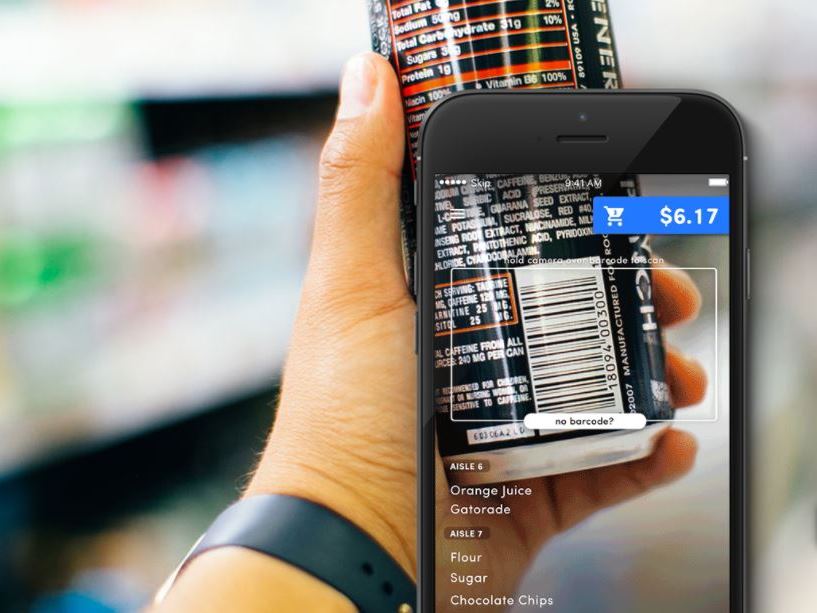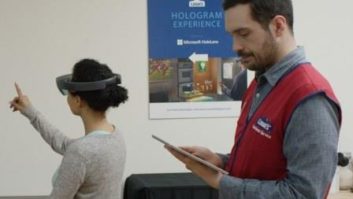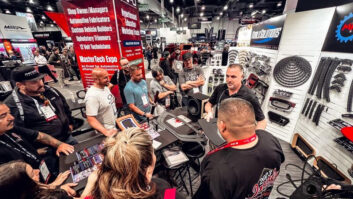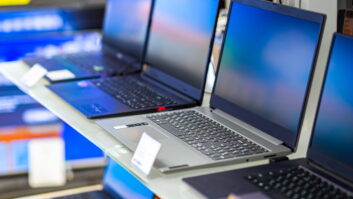
One of the issues for all retailers is how to service their customers quickly so they don’t have to wait in line to check out.
No one likes to wait in line no matter what the reason, but especially to give someone else their money! Long checkout lines not only can lead to unhappy customers, but also may cause customers to abandon their carts (physically, not just virtually), and may even cause them never to return to your store again.
Some stores, such as grocery stores and drug store chains, have added self-checkout kiosks where the customer can scan their items, bag them and pay.
However, many customers find these machines confusing and end up requesting help from a store associate to check out anyway. The other issue is the cost to a retailer to buy and set up these kiosks, which can run between $3000 and $10,000 each.
Most recently, other solutions have been introduced to facilitate self-checkout, ones that are much cheaper for the retailer to deploy and simpler for the customer to use.
These solutions are mobile app-based and can be used in conjunction with any smartphone.
The most famous of these – or at least the one that has been in the news the most – is Amazon Go. Amazon has opened a test store in Seattle where customers can grab some lunch (the store pretty much only sells prepared food) and simply walk out past an RFID reader. The product has a built-in RFID tag, and the reader can read the tag’s signal, as well as the unique Bluetooth signal emanating from your phone. And, recognizing both the product and you, it will charge your account accordingly.
It is a great scenario, at least in theory. It is unclear how well this system actually works since Amazon has not yet rolled it out to other stores, nor have they opened it to the general public.
Perhaps the best part about the Amazon system is that you don’t have to scan anything.
However, if we use the phone to scan an item’s UPC bar code, the process becomes much simpler and cheaper to deploy. Sam’s Club, for example, has activated its Scan & Go app at all its stores across the country.
In case you haven’t used it, it is surprisingly simple for the customer to download onto their smart phone and use.
The phone’s built-in camera acts like a barcode scanner. The customer just scans the item and places it into their shopping cart. When they are finished shopping, they use the app to check out and pay (you must have a credit card stored on the app). When you physically leave the store, an employee also has a record of your transaction on their phone. They check the physical contents against their phone’s copy of the transaction receipt and then off you go.
There are companies that provide this app capability to any interested retailer. One of them is called GoSkip. GoSkip is a fairly new U.S. company but has already integrated their app into a number of U.S. retail chains.
The app essentially works the same way as the Sam’s Club app – it is integrated with the store’s point-of-sale (POS) system and the customer can scan products, check out and process payments through the app. GoSkip also has the capability of storing promotional information on each item so if it is part of a promotion, or otherwise on sale, the promotional price is reflected when the item is scanned.
GoSkip also allows the retailer to collect all of the customer’s shopping behavior including what they buy, when and where they shop, and how much on average they spend.
Another nice feature is that the retailer can predetermine what kind of item sample set is required for the store associate to check before the customer leaves the store. In other words, if a supermarket customer purchases 50 items, it would take an inordinate amount of time for an associate to check every single item in the basket against the digital receipt. Instead, the retailer can select a random subset of items for the associate to check; every fifth item for example. So then the associate would only have to check a total of 10 items instead of all 50.
More advanced integrations can actually pinpoint the location of items in a store, so it will provide the most efficient shopping route to find all of the items on a customer’s shopping list.
There are alternative companies to GoSkip, including Scandit and others.
But besides just creating a more convenient shopping experience, these kinds of apps prove to be invaluable for connecting retailers with their customers. One of the biggest advantages e-commerce companies have over traditional offline retailers is that they are able to capture every bit of data around every single customer’s shopping patterns. This is in contrast to most brick-and-mortar retailers, who can’t even capture their customers’ names and email addresses.
Providing a self-checkout app becomes a solid quid pro quo, and allows the retailer to offer their customers a salient benefit in exchange for their data. Imagine the effective ways you could market to your customers if you knew not only who they are, but also the details of every item they purchased and transactions they made. In some cases, if the retailer invests in Bluetooth beacons for their stores, they can even track a customer’s movements and shopping patterns (something akin to an online retailer being able to know their customer’s page-view history).
So these technologies in essence narrow the gap between the online and offline retail experience.
Specifically, for CE retailers, being able to link an app checkout system with a home delivery or installation scheduling tool could be the panacea of efficiency for both the customer and the retailer. Just sayin’…
Noah Herschman is a Microsoft retail industry senior architect with over 30 years’ experience in CE retail, including stints at Tweeter, Amazon, Staples China, eBay, DHgate and Groupon Goods Asia. His partner ShiSh Shridhar has worked at Microsoft for more than 20 years, currently as retail industry lead for data and analytics. Together they are creating technical solutions that are sophisticated in design and specifically targeted to improve businesses by engaging customers, empowering employees, optimizing operations and transforming products.













